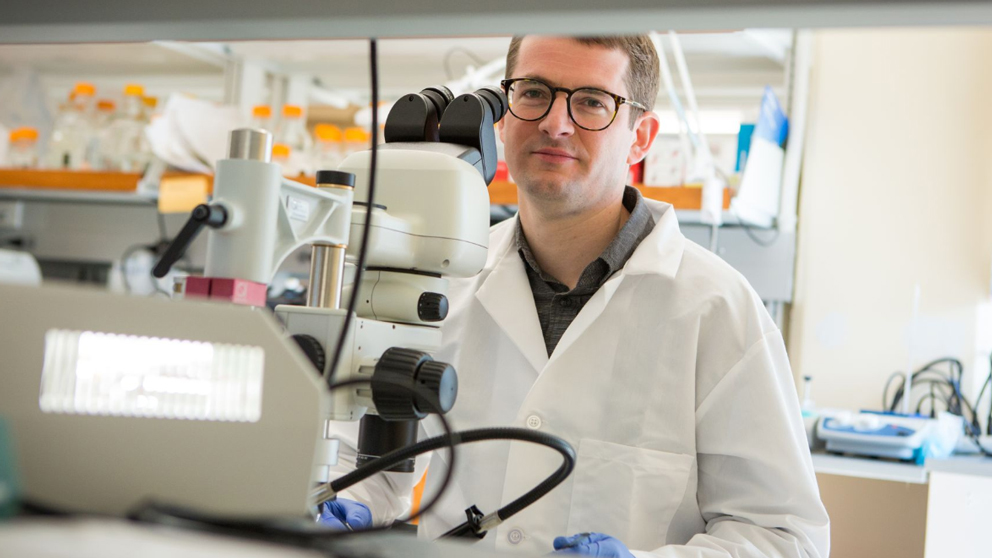
Basile Tarchini in his laboratory at The Jackson Laboratory in Bar Harbor, Maine. JAX photo by Tiffany Laufer.
GPSM2 and GNAI define the tallest row of stereocilia and help establish the identity for other rows.
A research team led by Jackson Laboratory (JAX) Assistant Professor Basile Tarchini, Ph.D.Investigating inner ear development, focusing on the role of cytoskeleton polarization in sensory function and hearing loss, with a goal to inform therapies for sensory cell regeneration.Basile Tarchini, Ph.D., has found two new proteins that are essential to the correct elongation of stereocilia, tiny hair-like cellular protrusions in the inner ear.
A sound wave goes on a fantastic roller-coaster ride on its way through the human ear to the brain, where it’s processed and recognized. Once it enters the cochlea, the sound wave must brush through stereocilia, which sit atop sensory cells to capture vibration, leading the cell to send an electrical signal to the auditory nerve, which in turn carries it to the brain.
Stereocilia are arranged in bundles and aligned in rows of graded height, tallest to shortest. (Picture a toothbrush with multiple, separate bundles of tapered bristles). Tarchini and colleagues found that the proteins, GPSM2 and GNAI, are critical participants in a more massive elongation complex sitting at the very tip of stereocilia in the first row only. These proteins establish the maximum height of the first row, determine its tallest identity, and help determine the height of the other, shorter rows.
We’re born with only a limited number of sensory cells and stereocilia, and if they’re damaged by exposure to too much noise or certain medications, they won’t grow back, and we’ll lose our ability to hear. By working out the molecular steps involved in stereocilia development and function, Tarchini hopes to find ways to restore damaged stereocilia and preserve hearing.
In research published in Current Biology, the team, which also includes researchers from the University of Utah, used mouse models to determine how that essential, tallest row of stereocilia forms. In healthy stereocilia formation, WHRN, a protein previously identified as being involved with stereocilia organization, delivers GPSM2 and GNAI to only the first row of stereocilia tips, securing the highest “dose” of the elongation protein complex at their tips. In the absence of GPSM2-GNAI, WHRN and the elongation complex are present together at the tips of stereocilia in the first row, but these stereocilia fail to grow to the correct height, resulting in profound deafness.
Tadenev et al.: GPSM2-GNAI Specifies the Tallest Stereocilia and Defines Hair Bundle Row Identity. Current Biology, Feb. 28, 2019, DOI: 10.1016/j.cub.2019.01.051